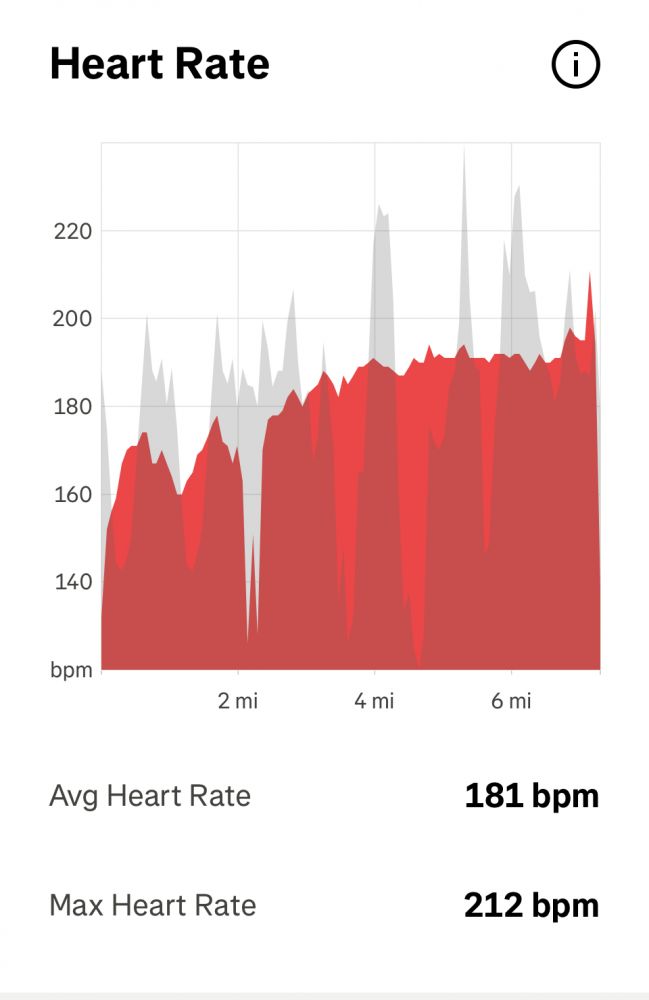这两天这里围绕着豆豆RV的十迈心率有不少讨论。有人羡慕她强大的心脏,有人怀疑她速度过快。无独有偶,昨天在跑群聊天群里,一位女跑友也提到心率问题。这是她昨天跑tempo的心率:


她是一个很强的马拉松跑者,但是这几年总发现自己的跑步心率降不下来,很难降到150以下。昨天最后冲刺时高达212.
豆豆RV前天的十迈tempo平均心率有160,也是降不下来。但是最高心率是173。不知道她的最高心率能达到多高。不是给你带来恐慌,是想提醒你一下注意有没有其他症状。listen to your body.

针对我这位跑友,有为年长的跑友建议去做一下EKG排除问题,他提出了exercise induced SVT。也提醒这里的跑友们注意一下。
这里是网上信息:
-
SVT is a type of tachycardia, a fast heart rate, where the rapid heartbeat originates above the ventricles of the heart (hence "supraventricular").
-
Exercise can trigger SVT by increasing sympathetic nervous system activity, which can lead to a faster heart rate. In some cases, a specific type of SVT called reentrant SVT may be triggered by a premature heartbeat.
-
While often asymptomatic, exercise-induced SVT can cause palpitations, dizziness, lightheadedness, shortness of breath, or chest pain.
-
If SVT episodes are frequent, prolonged, or accompanied by other symptoms like chest pain, shortness of breath, or fainting, it's important to consult with a doctor.
-
Treatment options for SVT include medication to control heart rate, cardioversion (using an electric shock to restore normal rhythm), or procedures like radiofrequency ablation to target the electrical pathway causing the arrhythmia.
-
While exercise can be a trigger for SVT, it's generally not something to avoid. WebMD recommendsconsulting with a doctor to determine an appropriate exercise plan and be mindful of potential triggers like intense exercise.